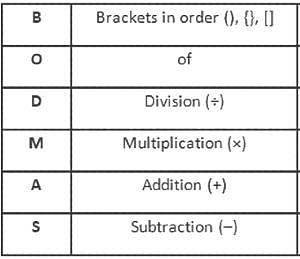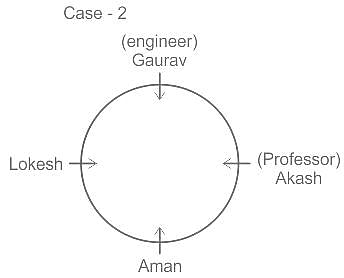RRB NTPC CBT 1 Question Paper (Held On: 7 Jan 2021 Shift 1) - RRB NTPC/ASM/CA/TA MCQ
30 Questions MCQ Test - RRB NTPC CBT 1 Question Paper (Held On: 7 Jan 2021 Shift 1)
Who is known as the Father of India’s Space Programme?
During which five year plan did India opt for a mixed economy?
| 1 Crore+ students have signed up on EduRev. Have you? Download the App |
Consider the given statement and decide which of the given assumptions is/are implicit in the statement.
Statement:
The electricity board has started going from home to home to collect bills.
Assumptions:
A. Electricity board considers going home to home an effective way to collect bills.
B. The electricity board has increased its focus on collecting bills.
Statement:
The electricity board has started going from home to home to collect bills.
Assumptions:
A. Electricity board considers going home to home an effective way to collect bills.
B. The electricity board has increased its focus on collecting bills.
Choose the conclusion(s) which logically follow from the given statements.
Statements:
MS Dhoni is a popular cricketer.
All cricketers are fit and healthy.
MS Dhoni earns a handsome amount every year through advertisements of various products.
Conclusions:
A. All popular cricketers earn a handsome amount through advertisement.
B. MS Dhoni is fit and healthy.
C. MS Dhoni, being famous, advertises only famous products.
Simplify the following.
2.2 × 0.2 ÷ (0.4 × 1/2) - 1/2 × 4(1.04 - 0.2 x 0.2)
When is World Book and Copyright Day celebrated?
Which number from among the given options will come in place of (*) in the given number series ?
1, 1, 2, 8, 3, 27, 4, (*), 5, 125....
What was the main reason for calling off the Non-Cooperation Movement by Gandhiji in 1922?
As of August, 2019, how many Himalayan peaks are open for trekking for domestic and foreign mountaineers?
Which country ranked first in the world as per the human development index of 2020?
In an examination, a student scored 65% marks but was 20 marks below the qualifying marks. Another student scored 80% marks and scored 10 marks more than the qualifying marks. Total marks of the examination are:
Identify the number that does NOT belong to the given series of numbers.
46, 31, 22, 17, 30, -32, -89, -179
Which sea route is the busiest in the world?
Which country hosted the Asian Cup Football tournament in 2023 ?
If P = 2 + √3, Q = 2 - √3, then P/Q = ?
A sum of Rs. 12,000.00 deposited at compound interest becomes double at the end of 5 years. At the end of 15 years the sum will be:
One root of the equation 2x2 - 8x - m = 0, is 5/2 The other root of the equation and the value of m are respectively:
For which Indian spice did the Indian government challenge the US patenting and force them to revoke it?
Select the letter from among the given options that can replace the question mark (?) in the following series.
Y, V, Q, J, ?
The denominator of a fraction is 2 more than the numerator. When the numerator is multiplied by 3 and the denominator is multiplied by 2 the fraction becomes 1/2. The given fraction is:
According to the Census of 2011 ______ is the most populated state of India.
Which country was placed first in the Asian Games held in Jakarta in 2018?
Select the number from among the given options that can replace the question mark (?) in the following series.
4, 14, 60, 248, ?
Based on the bar graph given, calculate the approximate percentage increase in sales of mobile phones from 2004 to 2008.

Four brothers Aman, Gaurav, Aakash and Lokesh are at their family function sitting across a circular table. Their occupations are Lawyer, Doctor, Professor and Engineer. Lokesh who is not the Professor, starts a conversation about the on-going IPL and after him the Engineer gives a long discourse about the teams that should reach the play-offs. Aman who is sitting across the Engineer and next to the Professor responds to the Engineer's predictions. Akash speaks only at the end. Who is the Professor?






























